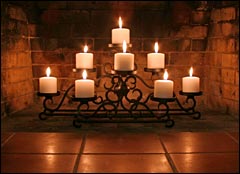Dear Umbra,
Our fireplace is terribly drafty when we’re not using it, and not very functional when we do. Despite the cheery blaze, most of the heat seems to go up the chimney. I tend to burn those “green” coffee logs since setting a real fire isn’t worth the trouble. My question is: should I think about getting a high-efficiency insert, or a pellet stove, or is burning wood just bad? And are those coffee logs really cleaner? Sometimes a fire is just cozy.
Brona
Thornhill, Ontario, Canada
Dearest Brona,
We could launch an entire inquiry into What Is Coziness, and certainly you’ll have to do that with yourself to resolve this question. Fireplaces are, as you have noticed from your personal experience, inefficient both when empty and when ablaze with coziness. The fake logs really are cleaner than a pile of burning wood, and are just as effective for heating cozy marshmallows, melting cheese, and blazing cheerily. But an insert will deliver heat in a much more efficient way (though it may not allow you to melt marshmallows).

Insert coziness here.
Photo: iStockphoto
If you want to spend the money to get a fireplace insert, there are three kinds. One enables your fireplace to burn wood logs with less smoke and more heat, and reduces the drafts from an unused fireplace — it’s basically an efficient woodstove shoved into your fireplace by a qualified technician. Another, the natural-gas insert, looks like a fake fire but is in fact a real fire made from natural gas blowing into your fireplace. Quite toasty — I wrote about it last year. The third — continuing to make up for my yesteryear omission of pellet-fueled appliances — would be a pellet insert. This is in fact an electric pellet stove shoved into your fireplace by a qualified technician.
None of these three options will maintain the open masonry fireplace aesthetic, although they all can have windows showing a toasty flame. And all of them will cost money. Should you get one of these high-efficiency inserts? It will depend on your overall household heating situation and your budget. Prices for woodstove inserts, installed, seem to start a bit lower, around $1,000, than the pellet and gas inserts, which start around $1,200 before installation, but as always it depends on your local situation. The main question we environmentalists should look at is whether a significant source of space heat emanating from the location where your fireplace now sits is appropriate.
The key ecological point is: you don’t want to regularly burn more fuel in the home just to get some atmosphere.
If you do want a source of heat, you need to think how it fits into your home’s ecological profile. In an efficient, warm house, fewer natural resources are spent heating the space. Maybe your home is toasty enough without a cozy space heater. Maybe the fireplace is in a drafty living room so toasty space heating seems appealing, but the true first steps in improving the efficiency of the room are insulation and window glazing. Maybe your home is efficient, but you spend all your time in the zone of the fireplace, and you could cut down on other heat expenditures by installing an insert and often using it in place of the whole house system. Just a few notions for you to think about.
If you do decide on an insert, a new pile of factors needs to be evaluated. Some of these are: availability of fuel, reliability of fuel, and whether power outages are common. Pellet fuels and their appliances (stoves, inserts, furnaces) are cleaner burning than woodstoves, but they produce more particulate matter than gas. But remember, gas is nonrenewable and climate warming.
You may not have to consider all these factors if you decide to change absolutely nothing about your fireplace. Always an option, and I’m leaning toward it in your case. There are ways to reduce the fireplace draftiness: insulation, installing glass doors, sealing the flue, and more. I’m out of space here, so let’s make that a cliffhanger type of ending to this dramatic column.
Suspensefully,
Umbra


